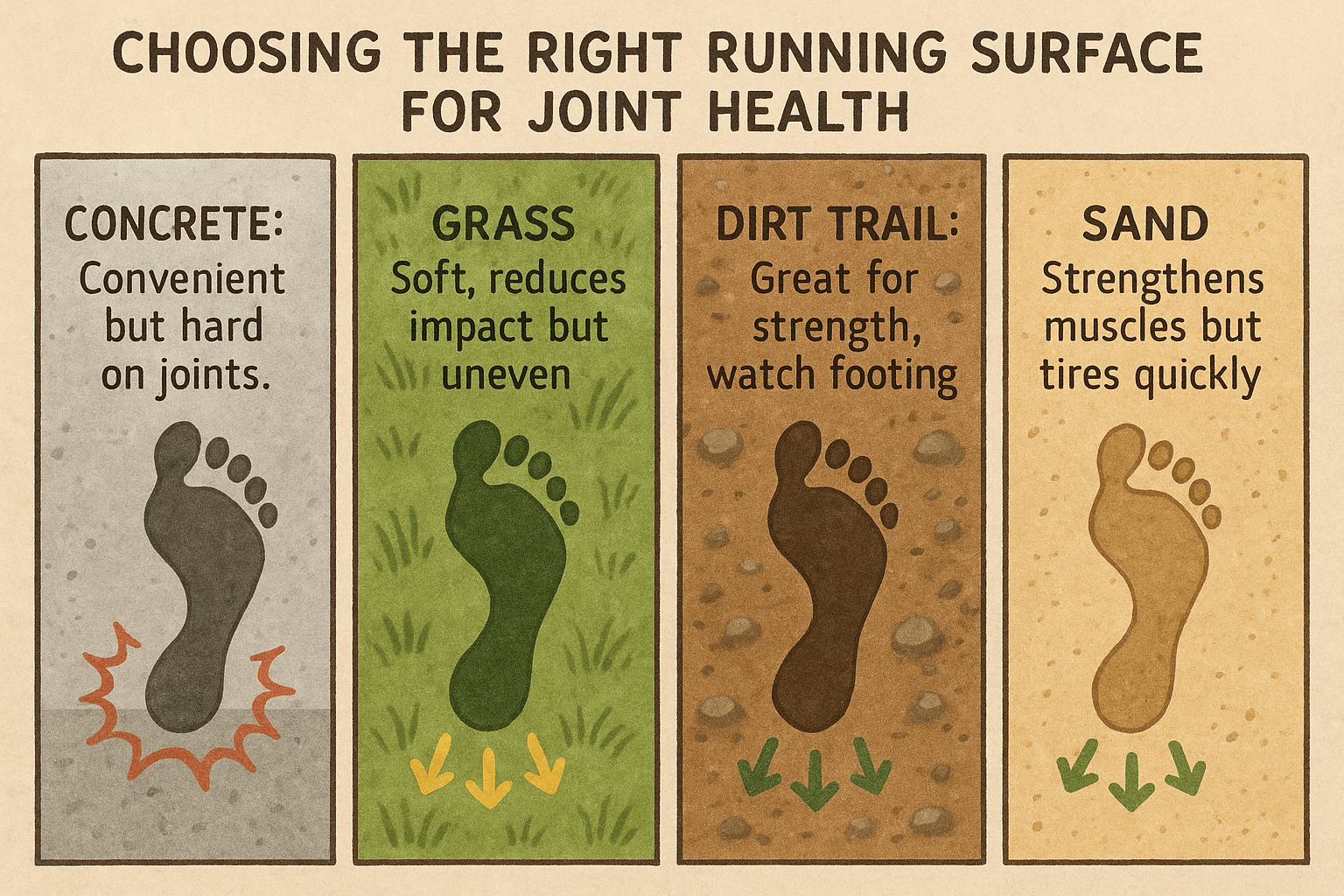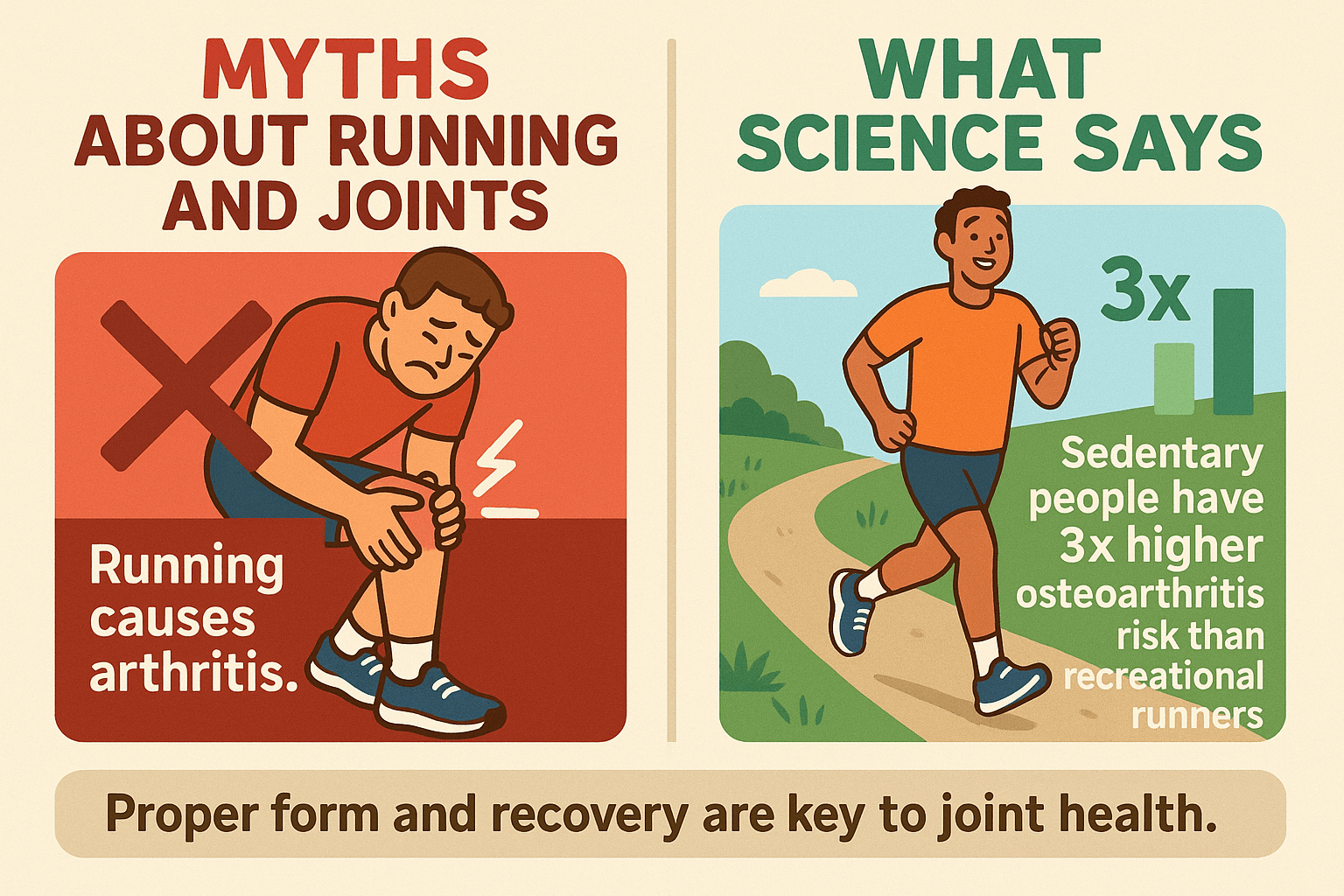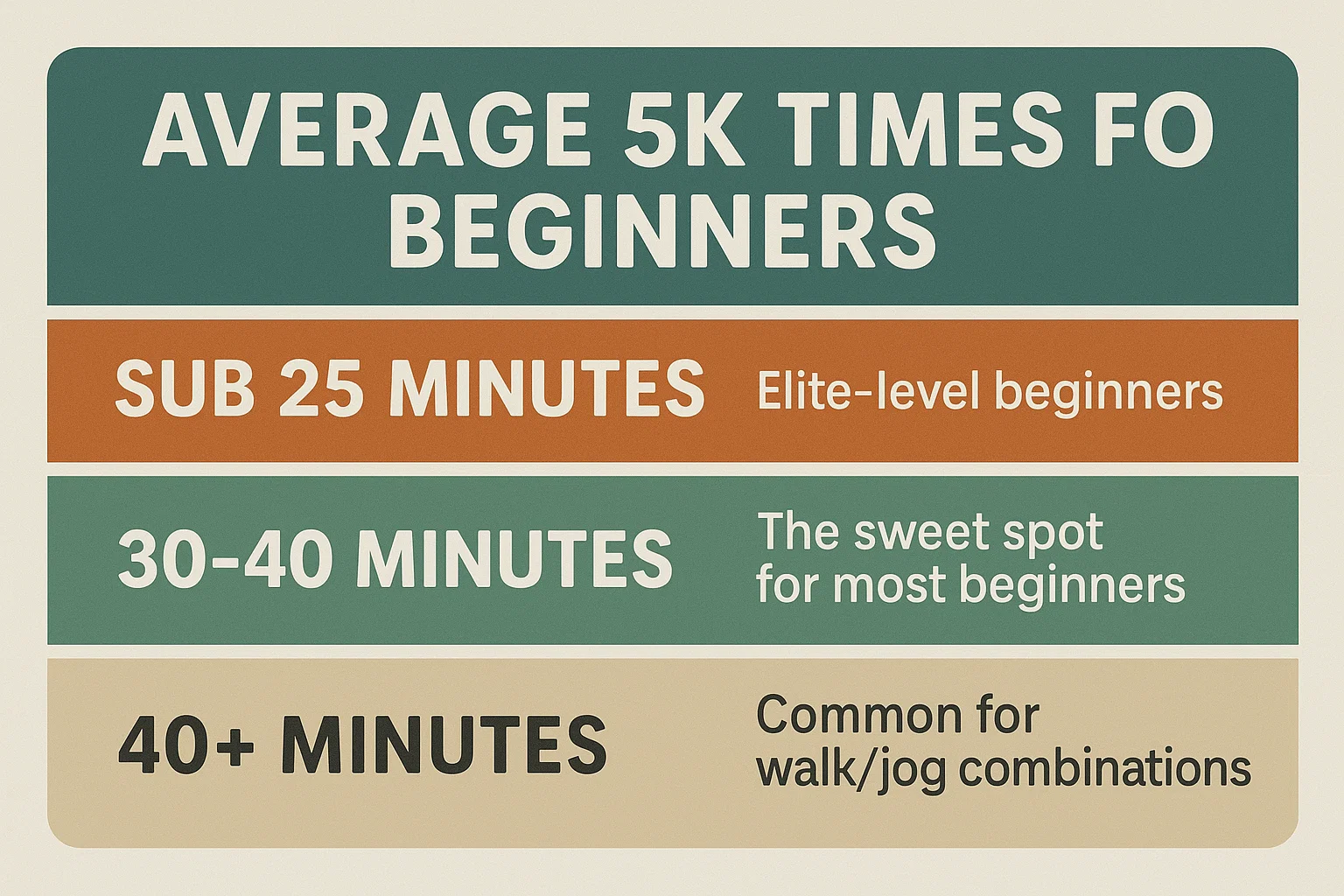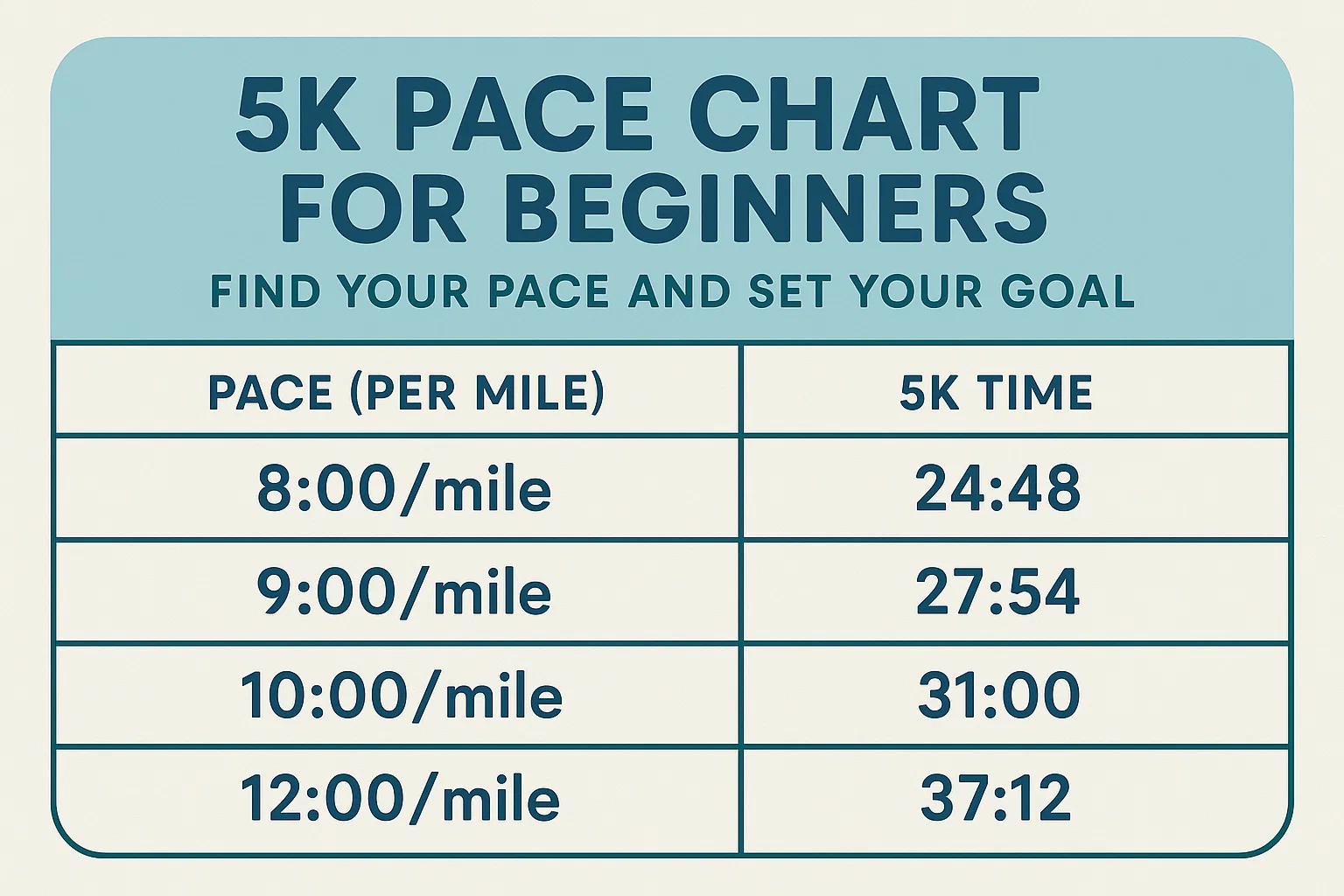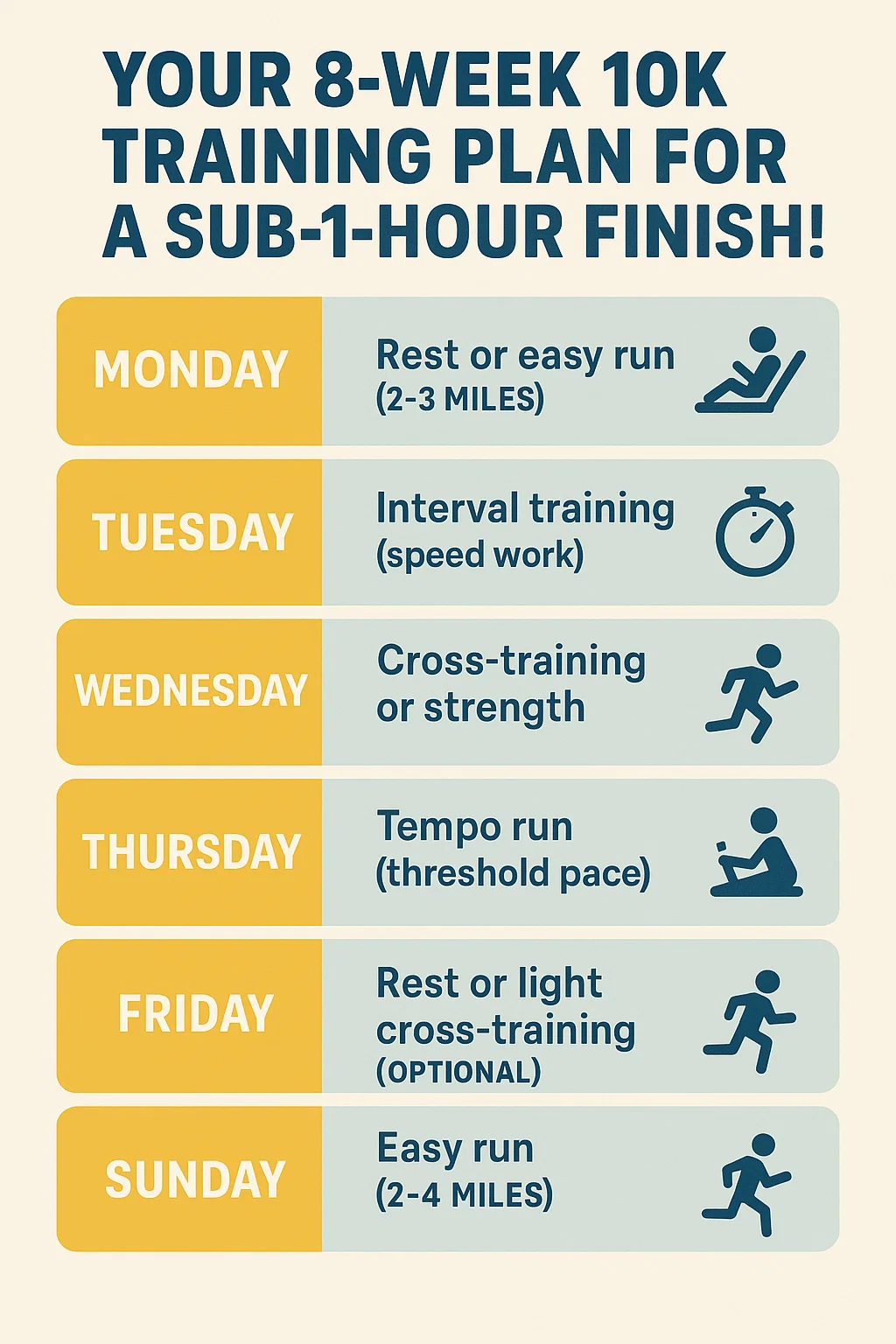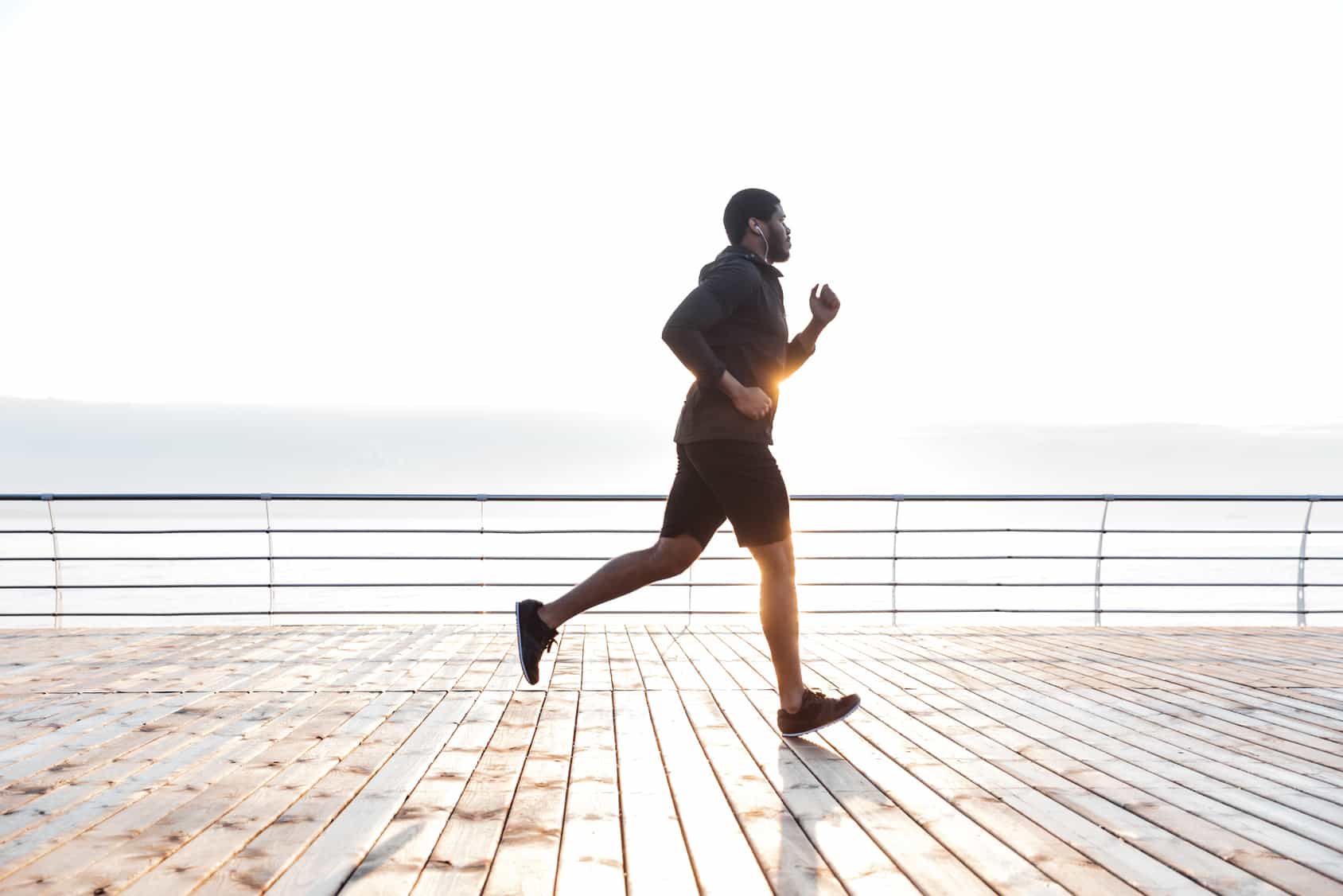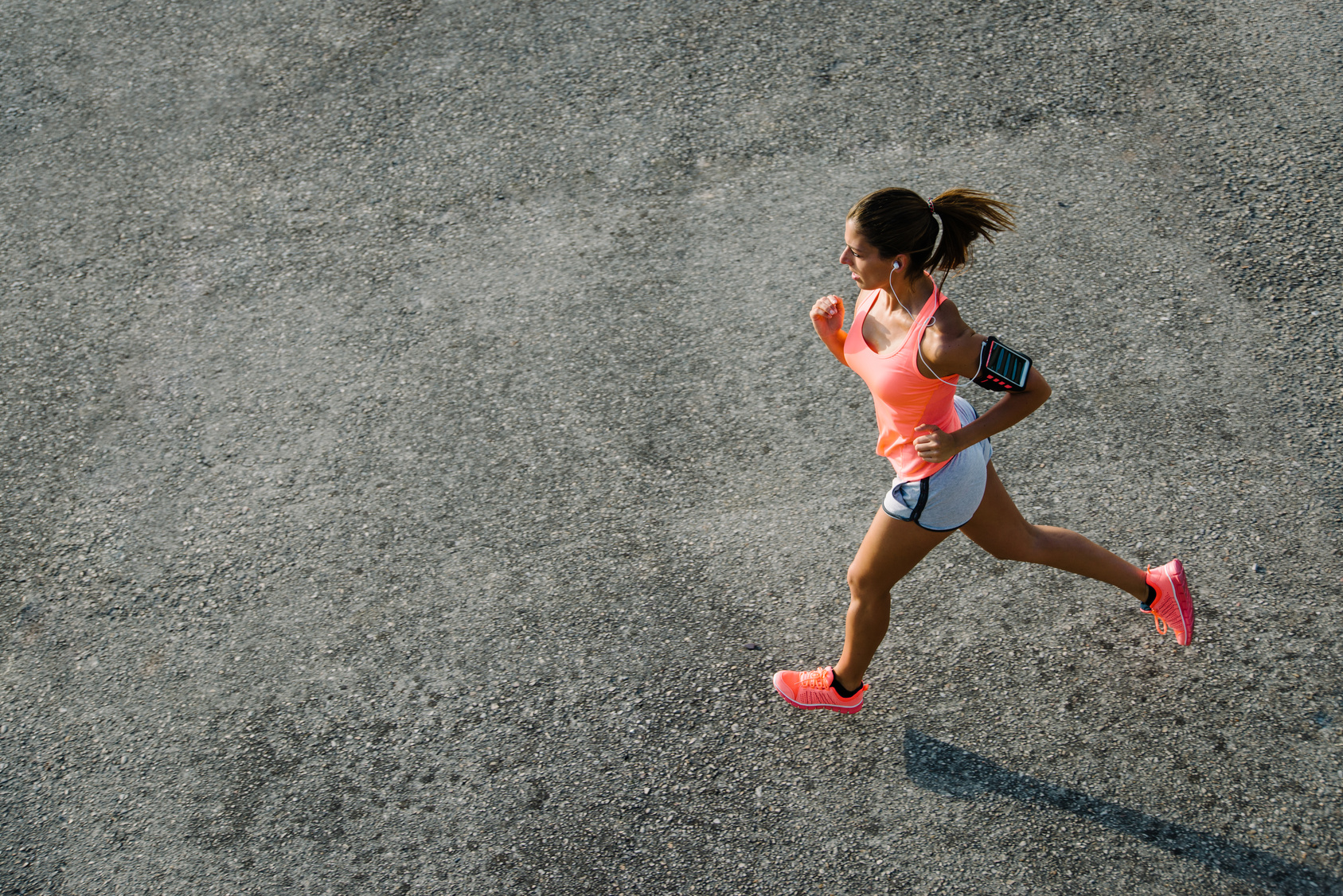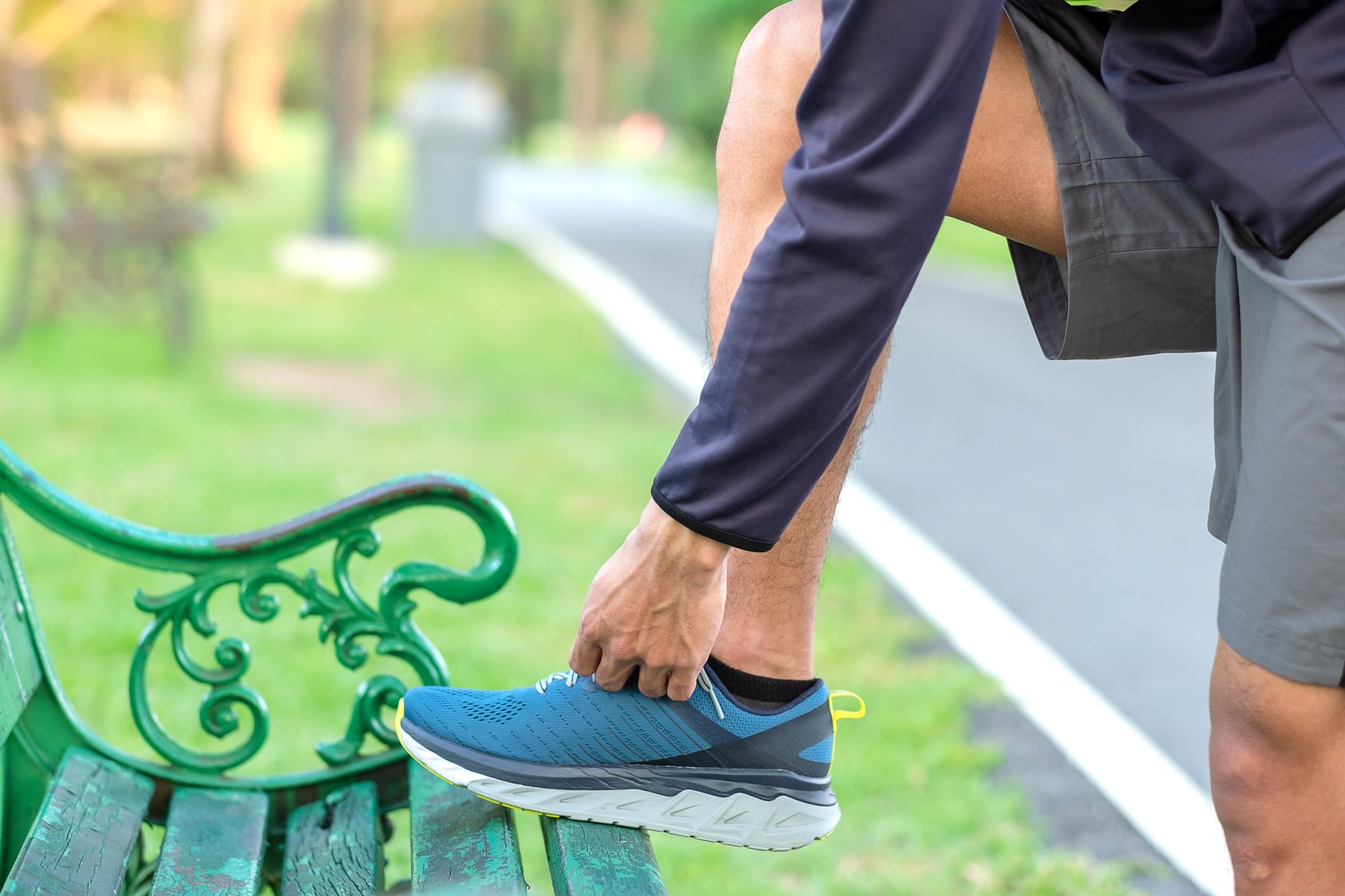If you’re a new or intermediate runner overwhelmed by all the shoe options out there, take a deep breath. I’ve been in your shoes (quite literally), and I’m here to help as your running buddy and coach.
In this guide, I’ll break down the best running shoe brands on the market, sharing what each brand is known for, their pros and cons, standout models, and a bit of my own experience and research from the running community (yes, I lurk Reddit threads so you don’t have to!).
By the end, you’ll know how to choose the right pair for you – whether you’re lacing up for your first 5K or training for your tenth. Let’s dive in!
Ready? Here we go.
Nike – The Innovator and Pace-Setter
When it comes to running shoes, Nike’s like the heavyweight champ. It’s everywhere – from rookies to elite athletes, you’ll find Nike on the feet of runners all around the world.
And why?
Because they’re all about innovation, style, and performance. Nike doesn’t just follow trends; they set ‘em. They’ve been pushing running tech to new heights for years.
I might sound like a Nike ad but we all know it’s truth.
What Nike is known for:
Speed, style, and being ahead of the game.
Nike’s always tweaking, always improving. They brought us ZoomX foam and carbon-fiber plates, which honestly turned the racing world upside down. The first time I wore Nike Vaporfly? I felt like I was flying.
These shoes are no joke, breaking records and setting new standards. But don’t get it twisted – Nike isn’t just for elite racers. They’ve got something for every runner.
Take the Air Zoom Pegasus – a go-to for beginners and pros alike. It’s the perfect mix of comfort and durability, and it’s been a favorite for years.
Fit and feel:
Let’s get real about comfort. Nike shoes are known for having a slightly narrow fit, especially around the toe box. Now, that might be a game-changer if, like me, you’ve got narrow feet.
I swear, Nike shoes feel custom-made for my feet. But if your feet are on the wider side, it might not be the best fit. Don’t worry though, Nike has some wide options.
The real magic happens when you feel Zoom Air or React foam under your feet. Whether you want that firm response for speedwork or soft cushioning for longer runs, they’ve got you covered.
For beginners, the Air Zoom Pegasus is a solid choice – a great all-around shoe that’s not too soft, not too firm. Just the right balance.
Durability:
Nike shoes are pretty solid, but it depends on the model.
If you’re rocking the Pegasus or Structure, you’re looking at 300-500 miles before things start to wear down.
But if you’re splurging on something like the Vaporfly with its ZoomX foam, don’t expect it to last forever. These shoes are built for speed, but they do wear down quicker than your everyday shoes.
It’s a trade-off.
Innovations:
Nike’s big win? Carbon plate tech. Back in 2017, the Nike Zoom Vaporfly 4% hit the scene and it was a game-changer. That carbon plate, paired with ZoomX foam, made every step feel like you were getting a boost.
These shoes have helped a lot of runners reach new personal bests. Fast forward to today, and Nike’s Vaporfly Next% 3 and Alphafly Next% 2 are still dominating the marathon scene.
And it’s not just about race-day shoes. Nike’s Flyknit uppers give you a sock-like fit that moves with your foot, while that ZoomX foam delivers a super light, responsive feel.
Plus, Nike’s getting on board with sustainability, using recycled materials under their Move to Zero initiative.
Popular models and who they’re for:
Nike Air Zoom Pegasus – Neutral Daily Trainer.
This one’s a classic. It’s affordable, reliable, and great for daily runs.
- Strengths: Durable outsole, breathable upper, and balanced cushioning.
- Weaknesses: Not the lightest, and some folks feel the midsole’s too firm for long-distance.
- Ideal for: Daily runs, moderate-paced workouts, or even hitting the gym.
Nike ZoomX Vaporfly Next% – Elite Racer.
If speed’s your thing, this is the shoe. Lightweight, bouncy, and has that carbon plate magic.
- Strengths: Insane energy return and speed.
- Weaknesses: Not the most durable, and you’ll need to fork out $200+.
- Ideal for: Racing, 10K to marathon, or anytime you want to feel like you’re flying.
Nike Wildhorse/Pegasus Trail – Trail Shoes.
Nike’s trail shoes have come a long way. The Wildhorse and Pegasus Trail are solid options for lighter trails.
- Strengths: Comfortable cushioning, stylish, and versatile.
- Weaknesses: Traction isn’t as aggressive as specialized trail shoes like Salomon.
- Ideal for: Road-to-trail runs or dirt paths. If you’re tackling tough terrain, you might want something with more grip.
Adidas – The Boost Cushioning Pioneer
If you’re into running shoes, you’ve probably heard of Boost foam. Adidas made a big splash back in 2013 when they dropped that bouncy, springy Boost technology.
Adidas has earned its place in the running world with their Boost tech, and these shoes have become a go-to for both rookies and marathoners. They’re durable too.
Sure, they’re not the lightest shoe out there, but I’ve used Ultraboosts on my long runs, and they’ve got the right mix of comfort and support to make it all work. So, if you’re just starting your running journey, this is a great option for you.
Fit and design:
Adidas shoes usually have a snug fit, especially around the midfoot. That locked-in feel? I love it. It’s like the shoe was custom-made for my foot.
The Adizero Adios line is a favorite among elite marathoners for a reason—these shoes are responsive and fast. But, heads up: if you’ve got wide feet, be mindful of that midfoot snugness.
Some models come in wider versions, so keep an eye out for those.
Durability:
One of the standout features of Adidas is how tough their outsoles are. Take the Adidas Boston, for example—you can easily get 400-500 miles out of those (according to my research, I’m yet to try them). The Continental rubber outsoles?
Total game-changer. That extra grip is always a lifesaver.
The Boost foam holds up in all sorts of weather too, which is why I always reach for my Ultraboosts when the temperature drops. They perform just as well in the cold.
Technology and innovation:
Adidas is no slouch when it comes to performance. With their Adizero Adios Pro series, they’ve entered the super-shoe game. Lightstrike Pro foam and carbon-infused energy rods give these shoes a fast, responsive feel.
Sure, they haven’t gotten as much hype as Nike’s Vaporfly, but trust me—Adidas is making waves in the racing world. Their athletes are crushing it in these shoes.
Brooks – The Reliable Running Specialist
When I think of Brooks, I think of that coach you can always rely on—steady, supportive, and there when you need them. They’ve built their reputation around comfort, injury prevention, and a fit that feels just right.
Their “Run Happy” motto says it all: Brooks wants your running experience to be smooth and enjoyable.
I’ve logged hundreds of miles in Brooks shoes, and I can honestly say they’ve always been there for me.
Fit and feel:
Brooks shoes typically have a wider toe box than most brands, which I absolutely love. I’ve struggled on occasions with cramped toes in other shoes, but with Brooks, my toes have room to breathe and splay naturally.
For runners like me with wider feet, it’s a game-changer.
And if you use orthotics, you’ll be pleased to know that Brooks shoes fit those well too. Whether you’ve got flat feet, high arches, or something in between, there’s a Brooks shoe that’ll fit your needs.
Cushioning:
Brooks’ DNA Loft and BioMoGo DNA cushioning systems offer a smooth, stable ride. It’s not too soft, not too firm—just right. What I love most is that the cushioning adapts to your stride, offering a personalized feel.
These shoes are built for the long haul, whether you’re grinding out a long run or recovering after a hard race. The ride is always comfortable—never harsh.
Durability:
Brooks shoes last. I’ve put in a ton of miles on my Brooks Ghost, and the outsoles are still going strong. They’re made with high-quality rubber, which holds up even after hundreds of miles.
A lot of other shoes need replacing after just a few hundred miles, but I can keep running in Brooks for over 500 miles before I start noticing wear.
Innovation:
Brooks may not make as many flashy moves as some of the other brands, but they do things right. Take their GuideRails tech, for example. It helps control pronation without interfering with your stride unless you need it.
I’ve had so many runners tell me that switching to the Adrenaline or Glycerin models has helped reduce joint pain and made their runs feel more controlled. Brooks isn’t about jumping on trends—they’re about refining what works.
Popular Models and Who They’re For:
Brooks Ghost – Neutral Everyday Trainer.
My favorite. The Ghost is Brooks’ most popular neutral shoe. It’s perfect for daily runs and long runs. It’s cushioned and versatile. Some might find it a little “boring” if they want something with more bounce, but honestly, when you’re running, boring is good. It’s all about comfort.
Brooks Adrenaline GTS – Stability Trainer.
If you overpronate, this is the shoe for you. It’s got the same great comfort as the Ghost, with the added stability of Brooks’ GuideRails. It’s not the fastest shoe, but if you need stability and comfort, it’s a solid option for daily training and long runs.
Brooks Glycerin – Max Cushion Trainer.
The Glycerin is all about that soft, cushioned feel. It’s perfect for recovery runs or high-mileage training. It’s not the lightest shoe, but if you want a plush ride, this is your pick.
ASICS – The Gel King That Just Gets It
ASICS has been around forever, right? It’s like that one brand you can always count on, whether you’re a newbie or an experienced marathoner.
If you’ve ever hit up a running store or talked to a seasoned runner, you’ve probably heard the name. These guys know what they’re doing, especially when it comes to shoes that don’t let you down when you’re battling injuries or sore joints.
What ASICS is known for:
GEL technology, reliability, and solid durability. ASICS is all about shock absorption and impact reduction. If you’ve had joint pain or shin splints, chances are ASICS can help ease that discomfort.
The first time I tried the Gel-Kayanos, it felt like I was walking on air. The cushioning was top-notch, and the stability was perfect for those long runs where your joints are begging for mercy.
Fit and feel:
ASICS shoes usually run a little narrower, especially in the heel and midfoot. If you’ve got narrow feet, you’ll probably feel like they were made just for you.
But if you’re dealing with wider feet, you might need to grab a wide version or look for one of their models with more room in the forefoot.
The Gel-Kayano toe box isn’t as roomy as something like the Brooks Ghost, but it still gives you plenty of comfort if you don’t need a ton of space upfront. And the upper? It’s like a cozy hug for your feet—secure, soft, and supportive all at once.
Cushioning:
ASICS is all about that shock absorption with their GEL technology.
Whether it’s the Gel-Kayano, Gel-Nimbus, or Gel-Cumulus, their gel padding helps absorb impact and ease the stress on your joints. It’s plush without feeling too soft or squishy.
I’ve run hundreds of miles in the Gel-Nimbus, and they’ve always felt just as cushioned as when I first slipped them on—no drop-off in the padding.
As a coach, I always recommend ASICS to runners dealing with joint pain or just looking for that added protection on longer runs.
Mizuno – Wave Technology and Firm, Smooth Rides
Mizuno doesn’t always get the buzz like Nike or Adidas, but trust me, if you’ve ever laced up their shoes, you’ll get why so many runners swear by them. Known for their Wave Plate tech, Mizuno gives you a smooth, stable ride. If you like a shoe that’s firm but responsive, they’ve got you covered.
What Mizuno is known for:
Here’s what makes Mizuno stand out: the Wave Plate. It’s a wave-shaped insert in the midsole that helps cushion the impact and gives you that springy push forward. It helps stabilize the foot without all the bulk of traditional stability posts, so you get the support without the clunky feel.
Fit and Feel:
Mizuno shoes are pretty spot-on with sizing. They’re snug in the midfoot and heel but give you enough room in the toes to avoid that pinched feeling. If you’re coming from brands like HOKA or Altra, which are more cushioned, Mizuno has a more classic, no-frills feel.
Cushioning:
Mizuno finds that sweet spot. The Wave Rider, for instance, gives you just the right cushioning with a kick of responsiveness. You get a bouncy feel without feeling like you’re floating. They’ve also added Enerzy foam in the newer models, which is softer and bouncier, giving you comfort without losing that springy feel.
Durability:
Mizuno shoes hold up, no doubt. They’re made to take the miles and still give you that solid support. The outsoles are tough, handling hundreds of miles before they even start to show signs of wear. I’ve put these shoes through some serious training, and they’ve held up great.
Popular models and who they’re for:
Mizuno Wave Rider 26 – Neutral Trainer:
The Wave Rider is one of Mizuno’s longest-running models, and for good reason. It’s a reliable, neutral shoe that’s great for daily training.
- Strengths: Balanced ride with solid cushioning and responsiveness.
- Weaknesses: Not as plush or soft as some competitors.
- Ideal for: Daily runners who need something that can handle high mileage without sacrificing performance.
Mizuno Wave Inspire 18 – Stability Trainer:
If you need a bit of extra support but don’t want something too heavy or restrictive, the Wave Inspire is a fantastic choice.
- Strengths: Provides stability without feeling overly firm.
- Weaknesses: Not as soft or cushioned as other shoes in the same category.
- Ideal for: Runners who need moderate support for their stride, but want a shoe that’s still lightweight and responsive.
Mizuno Wave Sky 6 – Max Cushioned Trainer:
Mizuno’s answer to shoes like the Brooks Glycerin or ASICS Nimbus, the Wave Sky offers maximum cushioning for long runs or recovery days.
- Strengths: Plush cushioning with a smooth transition.
- Weaknesses: It’s a bit on the heavier side, so not ideal for fast-paced workouts.
- Ideal for: Runners who prioritize cushioning and comfort during their long-distance runs.
Mizuno Wave Rebellion Pro – Elite Racer:
For those looking for a performance shoe, the Wave Rebellion Pro is Mizuno’s take on the carbon-plated racer.
- Strengths: Lightweight and fast with excellent energy return.
- Weaknesses: Limited cushioning for longer distances.
- Ideal for: Racers looking for a fast, competitive edge.
Salomon – Trail Titans (and More) with Precision Fit
Salomon’s the go-to brand for trail runners, no question.
Born in the French Alps, they’ve become the brand to trust for rugged, technical trails. And even though they’ve ventured into road shoes recently, their bread and butter is still those aggressive, off-road shoes.
Let me tell you why Salomon is a trail running legend.
What Salomon is known for:
If there’s one word to describe Salomon, it’s grip. Their trail shoes are known for their aggressive traction and precise fit. Whether you’re running on muddy trails, rocky descents, or snow-covered paths, Salomon shoes give you that grip and protection.
They also introduced the Quicklace system — a toggle lacing mechanism that makes tightening your shoes quick and easy, especially when you’re on the go. And their EndoFit and Sensifit technologies provide a locked-in feel, which is crucial when you’re navigating technical terrain.
Fit:
Salomon shoes typically have a narrower fit, especially in the midfoot. This snug fit provides precision and control, especially on steep slopes or rocky trails.
If you have wide feet, you might find the classic Salomon fit a bit tight, but they’ve introduced wider toe box models and wide versions in popular shoes like the Speedcross and Sonic series. The fit is designed to hold your foot securely, preventing slippage when you’re navigating tricky terrain.
Cushioning:
Salomon’s known for a firmer ride compared to other trail shoes. Their midsole cushioning provides comfort, but it’s not as plush or soft as what you might find in HOKA or Brooks.
But that’s actually a good thing when you’re out on technical trails—it gives you more responsiveness and stability.
Some models like the S/Lab Ultra have a higher stack for added cushioning, making them perfect for long-distance races, but overall, Salomon focuses on traction and stability over plushness.
Durability:
Salomon shoes are built to last. The outsoles are made with Contagrip rubber, which offers incredible traction and durability on a variety of surfaces. Whether you’re running through mud, snow, or rocky terrain, you’ll get a long life out of these shoes.
The upper materials are also tough, able to withstand the abrasions that come with off-road running.
Popular models and who they’re for:
Salomon Speedcross 6 – Aggressive Trail Shoe:
This is the shoe that most people think of when they hear Salomon. The Speedcross features huge lugs that dig into soft, muddy trails.
- Strengths: Best-in-class traction for technical trails.
- Weaknesses: Can feel awkward on hard, smooth surfaces due to the aggressive lugs.
- Ideal for: Trail runners who need exceptional grip and stability on muddy, slippery, or rocky terrain.
Salomon Sense Ride 5 – Versatile Trail Shoe:
This shoe is great for all-around trail running.
- Strengths: Comfortable cushioning, good grip, and a flexible midsole.
- Weaknesses: Less aggressive traction than the Speedcross, so it’s not ideal for extreme trails.
- Ideal for: Beginner to intermediate trail runners looking for an all-purpose shoe that can handle moderate trail conditions.
Salomon Ultra Glide – Max Cushion Trail Shoe:
For long-distance runners, the Ultra Glide offers more cushioning and comfort while maintaining Salomon’s stability and grip.
- Strengths: Soft underfoot, great for ultramarathons.
- Weaknesses: A bit less stable than other Salomon models on very technical terrain.
- Ideal for: Ultramarathoners or long-distance runners who need a cushioned, protective shoe on trails.
Reebok – The Underdog with Surprising Energy
When you think of Reebok, you might picture their retro sneakers or those famous Reebok Pumps from the 80s. But trust me, don’t write them off when it comes to running shoes.
Recently, they’ve quietly made a name for themselves in the performance shoe market with innovations like Floatride foam and surprisingly light and responsive trainers. If you’re looking for a shoe that delivers value without breaking the bank, Reebok could really surprise you.
What Reebok is known for:
Reebok’s Floatride foam is a game-changer. This foam gives you that bouncy, springy feel that makes you want to pick up the pace, and it doesn’t come with the high price tag of other brands. Honestly, the Floatride Run Fast and Run Fast Pro models are so light and responsive, they’ve been compared to Nike’s Vaporfly, but without the crazy price.
Fit and Design:
Reebok shoes generally have a snug midfoot with a little extra space in the forefoot, which is awesome if you’ve got wider feet. The uppers are usually made from mesh or knit fabric, so they’re breathable and flexible. They may not be the flashiest shoes around, but they’ve got a sleek, minimalist design that’s still pretty modern, and they come in some cool colors.
Cushioning:
The Floatride foam in shoes like the Floatride Energy series gives you a responsive, bouncy ride.
It’s not as plush as Boost foam or HOKA’s cushiony soles, but it strikes a nice balance of softness and energy return—perfect for tempo runs or longer training sessions. If you’re the type of runner who likes a more energized feel, definitely give these a try.
Durability:
Reebok’s shoes have been getting good feedback for durability, especially the Floatride Energy series. The outsoles last a decent amount of time, and the Floatride foam holds up better than some lighter foams. You’ll get 400-500 miles out of these shoes before you see noticeable wear. That’s right in line with most top brands.
Popular models and who they’re for:
Reebok Floatride Energy 4 – Neutral Daily Trainer:
This one’s for the budget-conscious runner who doesn’t want to sacrifice performance. It’s lightweight, responsive, and comfy enough for long runs. The only downside? It’s not as plush as some of the others out there, but that makes it a great shoe for an energetic feel. Ideal for beginners or intermediate runners who want a reliable trainer.
Reebok Floatride Run Fast 2 – Lightweight Trainer/Speed Shoe:
This shoe is made for speed. If you’re looking for a racing shoe or a tempo trainer, the Floatride Run Fast 2 is perfect. It’s ultra-lightweight and awesome for fast-paced workouts. But, it’s not built for long races, and the outsole might wear out faster than some heavier shoes. Perfect for speedwork or 5K/10K races.
Reebok Floatride Energy X – Plated Distance Shoe:
A solid, affordable option for those who want a carbon-plated shoe for marathons or long-distance races without spending a fortune. The Energy X offers great value and solid energy return. It’s not quite as light or responsive as premium carbon shoes, but it gets the job done. Ideal for long-distance runners who want a carbon-plated shoe without breaking the bank.
HOKA – Max Cushion Magic for Happy Legs
Let’s talk about HOKA—the brand that flipped the script on running shoes. When they first showed up, their thick, chunky soles raised a few eyebrows.
I’ll admit, when I first saw them, I thought, “What are those, moon boots?”
But I’ll tell you, after trying them, I was hooked. I remember lacing up a pair of HOKA Clifton and feeling like I was stepping onto a cloud—smooth, cushioned, and soft underfoot.
After a few miles, I could feel the magic—my legs didn’t feel tired, my knees weren’t aching, and I felt like I could keep going forever. HOKA completely changed the game when it comes to cushioning.
What HOKA is known for:
Maximal cushioning with a rocker geometry that helps push you through each stride. If you’re the type of runner who loves cushioning but doesn’t want to feel bogged down, HOKA could be your new best friend. Their signature feature is that high stack height, giving you loads of foam underfoot.
And it’s not just for comfort—it helps reduce shock, take pressure off your joints, and give you a smoother ride during long runs. I’ve had some of my best recovery runs in HOKA shoes, and I can’t stress enough how much they help me feel fresh, even after logging miles.
Fit and feel:
If you’re used to low-profile shoes, HOKA’s fit can feel a bit different. Their shoes typically have a normal to slightly narrow fit in the midfoot, with a wider base. Early models had some issues with narrow toe boxes, but they’ve fixed that with newer releases, especially the Clifton.
The cushioning is plush, but the rocker design guides your foot forward with every stride. It’s like the shoe is pushing you to keep going, making it great for smooth, effortless strides. For long runs, I swear by HOKA—they reduce leg fatigue and keep me feeling fresh.
Cushioning:
The cushioning is where HOKA really shines. Their midsoles are made with a proprietary EVA foam that provides a soft, bouncy ride, almost like running on marshmallows. Some models, like the Bondi, are super plush, while others, like the Mach or Rincon, offer a more moderate cushioning.
I’ve used HOKA for both long runs and recovery days, and they’ve never let me down. Some runners worry that all that cushion will make the shoe feel slow or heavy, but HOKA managed to keep their shoes lightweight, even with the high stack. That’s one of the reasons I love them—maximum cushioning without the added weight.
Durability:
The durability of HOKA shoes can vary a bit. They use lightweight materials to keep the shoes from feeling too heavy, but this can affect how long they last. I’ve managed to get around 300 miles from my Cliftons, and I’ve heard of others pushing them to 500 miles.
The durability of the outsole depends on the model, but generally, if you’re running on roads, you’ll get solid mileage out of them. I was told that trail shoes like the Speedgoat hold up better, thanks to the Vibram rubber lugs.
HOKA’s newer releases have stepped up their durability, so I’d say they’re safe bets for good mileage.
Popular Models and Who They’re For:
HOKA Clifton 9 – Neutral Trainer
This is HOKA’s flagship shoe, great for runners who want tons of cushioning without feeling too elevated.
Strengths: Super cushioned yet lightweight, perfect for long runs and recovery.
Weaknesses: Might feel too soft for speed workouts.
Ideal for: Runners who want to protect their legs and knees or those logging long miles.
HOKA Bondi 8 – Max Cushion Trainer
If you’re after plush comfort, this is your shoe. The Bondi’s thick foam layer absorbs impact like nothing else.
- Strengths: Ultimate cushioning for long runs and recovery.
- Weaknesses: Heavy for a trainer, not the best for speed.
- Ideal for: Long, slow runs, recovery runs, or anyone with joint issues looking for top-tier comfort.
HOKA Speedgoat 5 – Trail Shoe
My next buy and one of the most beloved trail shoes, designed for tough terrain.
- Strengths: Amazing grip with Vibram Megagrip outsole, lightweight, and cushioned.
- Weaknesses: Might feel a bit unstable on technical trails with extreme elevation.
- Ideal for: Trail running, especially ultra-distance events, or anyone who loves a cushioned ride on the trails.
New Balance – Versatility and Foot-Friendly Design
I’ve got a soft spot for New Balance because they understand the struggle of finding a shoe that actually works for your foot. Whether you’ve got narrow, wide, or flat feet, New Balance has got your back.
And speaking from personal experience, having a brand that offers a wide range of sizing options is a total game-changer when you’ve battled foot issues like I have.
What New Balance is known for:
Exceptional fit options, balanced cushioning, and performance-driven designs. New Balance stands out because they focus on fit, and I’ve seen so many runners with wide feet swear by them. They offer a variety of widths, from narrow to extra-wide, making sure you find something that fits you.
Plus, New Balance isn’t just about the fit—they innovate with technologies like Fresh Foam and FuelCell. I’ve had personal experience with the Fresh Foam 1080v13, which is perfect for long runs and is seriously a lifesaver when dealing with plantar fasciitis.
Fit and comfort:
The real hallmark of New Balance shoes is their fit. They offer widths from D (standard) to 4E (extra wide), so if your feet tend to be on the wider side, you won’t feel like you’re squeezing into something that’s not made for you.
When I’ve worn their shoes, I’ve always felt like my foot has enough space to breathe, but not so much that it feels loose. The Fresh Foam 1080 is a great example—super comfortable with just the right cushioning for everyday runs.
Cushioning:
When it comes to cushioning, New Balance’s Fresh Foam is one of the best out there. It’s soft enough to cushion your feet on hard surfaces but still firm enough to keep you connected to the ground.
The FuelCell foam is their bouncier option—perfect for speedwork or tempo runs. I’ve used both and the combination of Fresh Foam and FuelCell is perfect for balancing comfort and responsiveness, whether you’re cruising through easy miles or pushing the pace. New Balance shoes support you without feeling like you’re running on marshmallows.
Durability:
If you’re looking for a shoe that’s going to last, New Balance has earned its reputation for durability. I’ve worn the Fresh Foam 880 series for marathon training cycles, and they’ve held up for over 500 miles without losing that cushioning feel.
The rubber outsoles don’t break down, making them a solid choice for high-mileage training. Trust me, these shoes go the distance.
Popular models and who they’re for:
New Balance Fresh Foam 1080v13 – Neutral Trainer
This shoe is the gold standard for neutral runners who want comfort and cushioning for long runs. It’s especially great for people with wider feet.
- Strengths: Cushioned ride, great for long runs, wide-foot friendly.
- Weaknesses: Not the most responsive for speedwork.
- Ideal for: Daily runs, long-distance training, or anyone who values a cushioned, secure fit.
New Balance FuelCell Rebel v3 – Lightweight Tempo Shoe
If you’re looking for a shoe that’s fast and light, the Rebel v3 is perfect.
- Strengths: Lightweight, responsive, great for speedwork.
- Weaknesses: Not cushioned enough for long runs.
- Ideal for: Speed days, tempo runs, and races (especially 5K/10K).
New Balance 880v13 – Everyday Trainer
This shoe is a workhorse for runners who need something reliable and durable for daily runs.
- Strengths: Stable, comfortable, and built to last.
- Weaknesses: Not the flashiest or plushest model out there.
- Ideal for: Everyday training, especially if you’re just starting or need a dependable shoe.
Saucony – Fast, Flexible, and Comfortably Cushioned
Saucony might not have the same massive fame as Nike or Adidas, but ask any runner who’s tried them, and they’ll tell you—Saucony is the perfect mix of comfort and performance. They’ve got a great reputation for lightweight shoes that still give you enough cushioning for those long runs without feeling sluggish.
Whether you’re just starting out or chasing a new PR, Saucony has shoes that work for all kinds of runners.
What Saucony is known for:
Lightweight shoes and a unique geometry called SpeedRoll, which gives you that quick, lively toe-off. Saucony knows how to balance speed and comfort—just ask anyone who’s run in a pair of Kinvaras.
Fit and feel:
Saucony shoes tend to have a snug fit, especially around the midfoot, so if you’ve got wide feet, you might need to go for their wider options. But once they’re on, they lock your foot in without feeling too tight.
I’ve always found their shoes flexible, which works great for my style of training. The PWRRUN and PWRRUN PB foams give that responsive feeling, making it easy to pick up the pace and feel like you’re in control of your stride. If you’re someone who wants more responsiveness than cushioning, Saucony hits the sweet spot.
Cushioning:
Saucony’s foam tech is one of the key things that sets their shoes apart. Their PWRRUN foam is light and springy, giving you that bouncy feel underfoot. But the real magic happens with PWRRUN PB, which is a PEBA-based superfoam used in the Endorphin Pro and Endorphin Speed models.
This foam isn’t just about cushioning; it gives you some serious energy return, making you feel like you’re springing forward with each step. I’ve had the chance to run in the Endorphin Pro, and let me tell you—it’s a game-changer for race day. It’s fast, responsive, and has just enough cushioning to keep you comfortable while giving you that extra pop to push through the finish line.
Durability:
Surprisingly, the PWRRUN and PWRRUN PB foams don’t just bounce back—they last. I’ve put in some serious miles with Saucony, especially the Ride series, and the cushioning’s held up like a champ. No worries about that ‘sinking’ feeling after a few hundred miles.
The outsoles on their shoes are made with high-abrasion rubber (like XT-900), which means they last long and offer great grip, even on wet or rocky surfaces. Saucony knows how to build shoes that endure, whether you’re putting in miles on the road or the track.
Popular Models and Who They’re For:
Saucony Ride 15/16 – Neutral Trainer:
The Ride is one of Saucony’s most versatile shoes. It’s got that perfect balance of cushioning and responsiveness, making it ideal for daily runs.
- Strengths: Light, comfortable, and durable enough to last.
- Weaknesses: Some might find it a bit too firm if they’re used to super plush shoes.
- Ideal for: Beginners and intermediates looking for an all-around, everyday trainer. If you want a no-frills shoe that gets the job done without breaking the bank, Ride is your go-to.
Saucony Endorphin Speed 3 – Plated Tempo Shoe:
The Endorphin Speed series is all about speed and versatility. With PWRRUN PB foam and a flexible nylon plate, it delivers an explosive feel with each stride.
- Strengths: Fast, lightweight, and responsive.
- Weaknesses: Not as cushioned for long runs as other models like the Ride or Triumph.
- Ideal for: Tempo runs, track workouts, or anyone looking to set a personal best in shorter races.
Saucony Endorphin Pro 3 – Carbon Plated Racer:
If you’re chasing a PR in the marathon or half-marathon, this is the shoe you want. The Endorphin Pro combines PWRRUN PB foam with a carbon plate for maximum energy return and propulsion.
- Strengths: Speed, lightweight, and perfect for long-distance racing.
- Weaknesses: Expensive, and not the most durable shoe if you’re not using it for races.
- Ideal for: Serious runners who need a top-tier racing shoe that won’t let them down.
Saucony Kinvara 13 – Lightweight Trainer/Racer:
The Kinvara is a classic lightweight trainer that has stood the test of time.
- Strengths: Super light and responsive, with just enough cushioning to keep you comfortable on the run.
- Weaknesses: Not as cushioned as some of the more plush models, so it might not be ideal for long-distance runners looking for maximum comfort.
- Ideal for: Runners who prefer a minimalist feel for faster workouts, racing, or speed training.
Altra – Zero-Drop Natural Running
If you’ve never heard of them before, don’t worry—I’ll break it down for you. Altra is known for its zero-drop design and wide toe box, and they’ve been making waves in the running world by helping people achieve a more natural stride.
If you’ve ever felt like your running shoes were squishing your toes or forcing you to land on your heels, Altra might just be the brand for you.
I’ve never had Altra shoes before but I keep hearing raving reviews about them so I decided to add them to this post. If you’d experience with them, please let me know in the comments section.
What Altra is Known For:
Zero-drop and a FootShape™ toe box. Let me explain. The zero-drop feature means that your forefoot and heel are at the same level, which encourages a midfoot or forefoot strike.
This aligns with a barefoot-style running philosophy that’s been gaining popularity in recent years.
Additionally, the FootShape™ toe box allows your toes to spread out naturally, which can improve stability and comfort during runs.
Fit and Feel:
The fit of Altra shoes is quite unique. If you’ve got wide feet, you’ll feel right at home in Altra’s shoes, especially in the toe box area. They also offer various shapes for the toe box, from Standard to FootShape™ Slim and FootShape™ Wide models, so no matter what your foot size is, you’ll find a pair that works for you.
The zero-drop feature will feel different if you’re used to traditional running shoes, so it’s important to ease into it.
Cushioning:
Altra’s cushioning varies depending on the model, but they generally use a combination of EGO foam and EGO PRO foam, which provides a soft and responsive feel. For long runs, I was told that the Altra Torin offers a good balance of cushioning without feeling too soft. For those who prefer a firmer ride, Altra’s Escalante or Lone Peak series offer a more minimal feel.
The cushioning works well for those looking to run in a more natural, barefoot-style manner, and if you’re new to Altra, I’d recommend starting with something like the Torin for its moderate cushioning.
Durability:
Altra shoes are generally durable, especially on the outsole. The company has improved their materials over the years, and the Lone Peak trail shoes, for example, are known for their durability even on rugged terrain.
The EGO foam used in their midsoles is pretty resilient, though some of the older models had issues with midsole degradation over time. Overall, you can expect good durability, but it’s always best to keep an eye on wear if you’re putting in high mileage.
Popular Models and Who They’re For:
Altra Torin 7 – Neutral Road Trainer:
If you’re looking for a cushioned shoe that handles long runs or recovery days like a pro, this one’s got you.
- Strengths: Cushioned, roomy toe box, zero-drop design.
- Weaknesses: Takes some time to get used to the zero-drop design.
- Ideal for: Neutral runners who want a cushioned ride with a more natural feel.
Altra Lone Peak 7 – Trail Shoe:
If you’re hitting the trails, this is a great option.
- Strengths: Wide toe box, durable, and cushioned enough for ultra distances.
- Weaknesses: Not as soft or responsive as some other trail shoes, especially on technical terrain.
- Ideal for: Trail runners looking for a comfortable, protective shoe for long distances.
Altra Escalante 3 – Lightweight Casual Trainer:
This is one of Altra’s lighter shoes, making it perfect for shorter runs or everyday wear.
- Strengths: Light, flexible, and foot-shaped.
- Weaknesses: Not a lot of cushioning for longer runs.
- Ideal for: 5K/10K runners or those looking for a minimalist shoe for daily wear.
Skechers – From Casual to Competition with Hyper Burst
Yep, Skechers—the brand you probably think of when it comes to comfy slip-ons or memory foam shoes—has seriously stepped up its game in the performance running world. And guess what? They’re killing it. Let’s break it down.
What Skechers is known for:
Skechers made a name for itself in running shoes with Hyper Burst foam. It’s a lightweight, responsive foam that gives you the perfect bounce and comfort, but without the weight. Their GOrun series has earned major praise for providing top-tier performance without the hefty price tag. Skechers even got elite athlete Meb Keflezighi on board after he won the Boston Marathon in their shoes—now that’s some serious street cred.
Fit and Design:
Skechers shoes tend to fit most feet pretty well. They usually have a wider forefoot than brands like Nike or Adidas, which is perfect if you need a little extra room for your toes. The mesh uppers are breathable and light, and while their design isn’t as flashy as some competitors, they’ve got a clean, modern look that holds its own.
Cushioning:
The Hyper Burst foam is one of the lightest and most responsive foams you’ll find. You get that bouncy feel without sinking into the shoe. If you’ve ever worn HOKA or Adidas Ultraboost, the Hyper Burst feels springier and more responsive. Skechers has also added a rockered geometry, called M-Strike, in many of their shoes to help encourage a natural midfoot strike and make your run feel smoother.
Durability:
While Skechers isn’t known for making shoes that last forever, they still hold up pretty well, especially considering how light they are. Many runners report getting 300+ miles out of Skechers’ performance shoes, especially the GOrun Razor and GOrun Ride series. The outsole does wear faster than some brands, but the Hyper Burst foam holds its cushioning for a long time.
Popular models and who they’re for:
Skechers GOrun Razor 3+/Excess 2 – Lightweight Trainer/Tempo:
This one’s for the speedsters. The Razor 3 is loved by runners who want a super-light shoe with a fast feel. It’s highly responsive and great for tempo runs. The downside? Durability could be a concern, especially on rougher surfaces. Ideal for speedwork or race days when you want a nimble, lightweight shoe.
Skechers GOrun Ride 9 – Everyday Neutral Trainer:
This is a solid daily trainer that offers a responsive, cushioned ride without feeling too soft. It’s lightweight and versatile, though the upper doesn’t have much padding. Ideal for daily training and long runs when you want something light and comfy.
Skechers GOrun MaxRoad 5 – Max Cushion Trainer:
If you’re all about that cushion, the MaxRoad 5 is your shoe. It offers loads of cushioning without feeling heavy. The downside? It’s not as responsive as the Razor. Ideal for long-distance running and recovery days, or if you need extra cushioning.
Final Thoughts: Choosing the Right Running Shoe for You
Choosing the right shoe really comes down to your personal needs as a runner. Whether you’re just starting out or training for a race, the right pair of shoes can make a huge difference. Here’s a quick breakdown of what some of the biggest brands offer:
- Nike – If you’re all about speed and innovation, Nike’s got you covered.
- Adidas – Durable and cushioned shoes that will last through many miles.
- Brooks – Reliable and comfortable, perfect for injury prevention.
- ASICS – Long-lasting cushioning with stability, great for distance runners.
- HOKA – Ultra-cushioned shoes that make running feel easy, perfect for newbies or those recovering from injuries.
- New Balance – Versatile fit and great cushioning for everyday runs.
- Saucony – Lightweight shoes that still give you the comfort you need.
- Altra – Zero-drop shoes with a wide toe box, perfect for a more natural stride.
- Mizuno – Sturdy, firm rides that give you great ground feel.
- Salomon – The king of trail running with amazing traction and protection.
- Reebok – Offering lightweight shoes at a great value.
- Skechers – Don’t count them out—lightweight and cushioned options that compete with the big names.
Your perfect shoe depends on your running style, what kind of terrain you’re tackling, and your personal fit preferences. As your running coach, I’d say: Don’t rush it.
Try a few on, and if possible, take them for a spin before committing. Your feet will thank you!
And remember, the best shoes are the ones that make you feel unstoppable. Find the pair that makes you feel confident, comfortable, and ready to crush your goals. Happy running!
Ultimately, running shoes should make you feel like a champion. When you slip on the right pair, it’s like magic—each stride feels effortless. The brands above are solid choices depending on what you need. Keep exploring, keep running, and before long, you’ll find the perfect shoes to take you to the next level.
Ready, set, go! Find those shoes that make you want to run and run happy.

